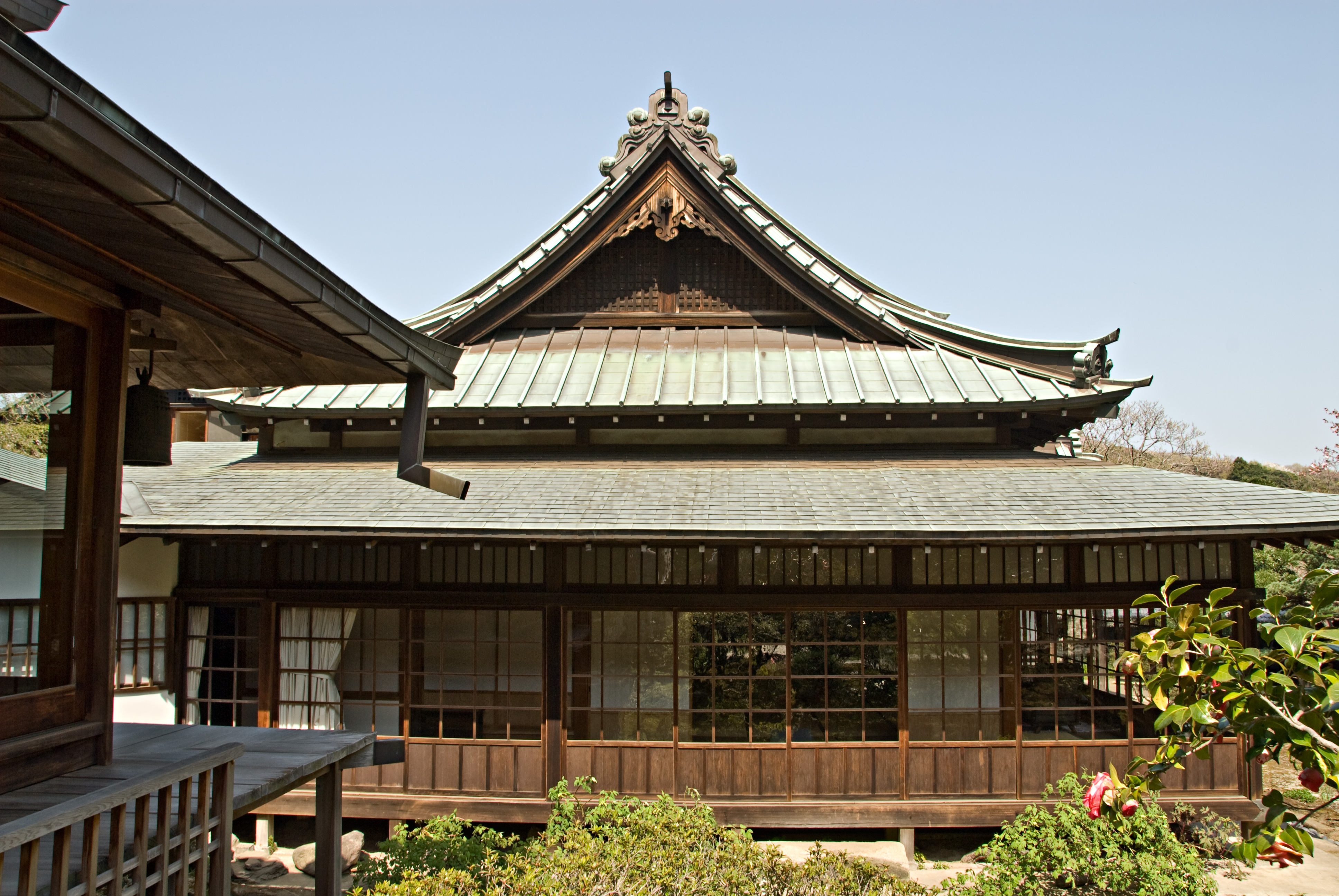- Tōkei-ji
Infobox Buddhist temple
name = Shōkozan Tōkei-ji

img_size =
img_capt = Tōkei-ji in Kita-kamakura
landscape = Yes
denomination = Rinzai, Engaku-ji School
founded = 1285
closed =
founder = Hōjō Sadatoki, Kakusan-ni
teacher =
director =
roshi =
abbot =
priest =
rinpoche =
reverend =
address = 1367 Yamanouchi, KamakuraKanagawa 247-0062
country = flagicon|Japan Japan
phone = 0467-22-1663
website = [http://www.tokeiji.com/pc/en/index.html Tokei-ji] nihongo|Shōkozan Tōkei-ji|松岡山東慶寺, also known as nihongo|Kakekomi-dera|駆け込み寺 or nihongo|Enkiri-dera|縁切り寺), is a Buddhist temple and the only nunnery in the city of Kamakura inKanagawa Prefecture ,Japan . It is part of theRinzai school ofZen 'sEngaku-ji branch, and was opened byHōjō Sadatoki in 1285. It is best known as a historic refuge for women who were abused by their husbands.History
The temple was founded in the 8th year of Koan,
1285 by nun Kakusan-ni, wife ofHōjō Tokimune (1251-1284) after her husband's death. Because it was then customary for a wife to become a nun after her husband's death, she decided to open the temple and dedicate it to the memory of her husband. She also made it a refuge for battered wives.In an age when men could easily divorce their wives but wives had great difficultly divorcing their husbands, the Tōkei-ji allowed women to become officially divorced after staying there for three years. Temple records show that, during the
Tokugawa period alone, an estimated 2000 women sought shelter there. The temple lost its right to concede divorce in 1873, when a new law was approved and the Court of Justice started to handle the cases.The temple remained a nunnery for over 600 years and men couldn't enter it until 1902, when a man took the post of head chief and Tōkei-ji came under the supervision of
Engaku-ji . Before then, the chief nun was always an important figure, and once it even was a daughter of EmperorGo-Daigo . Tenshū-ni, the daughter and only survivor ofToyotomi Hideyori 's family, son of Hideyoshi, entered Tōkei-ji following theSiege of Osaka . Such was the nunnery prestige that its couriers didn't need to prostrate themselves when they met aDaimyo 's procession.The two main buildings of the complex are the Main Hall and the Suigetsudō Hall, but this last is not open to visitors.
Behind the temple there's a graveyard where many celebrities are buried, among them two men also famous among European
Zen andhaiku aficionados,Daisetz Teitaro Suzuki andReginald Horace Blyth .For additional information: An academic treatise has been published recently titled "Zen Sanctuary of Purple Robes: Japan's Tokeiji Convent Since 1285", by Sachiko Kaneko Morrell and Robert E. Morrell (State University of New York Press, 2006).
References
* [http://www.asahi-net.or.jp/~QM9T-KNDU/tokeiji.htm Tokeiji] , A Guide to Kamakura, retrieved on April 6, 2008 en icon
* [http://www.tokeiji.com/pc/en/index.html Official website] retrieved on April 6, 2008 en iconExternal links
* [http://www.kamakuratoday.com/e/sightseeing/tokeiji.html Tokeiji] , sightseeing information and history by Kamakura Today
* [http://www.mustlovejapan.com/area/kamakura/tokeiji/ Kamakura Video Guide - Tokeiji]
Wikimedia Foundation. 2010.
